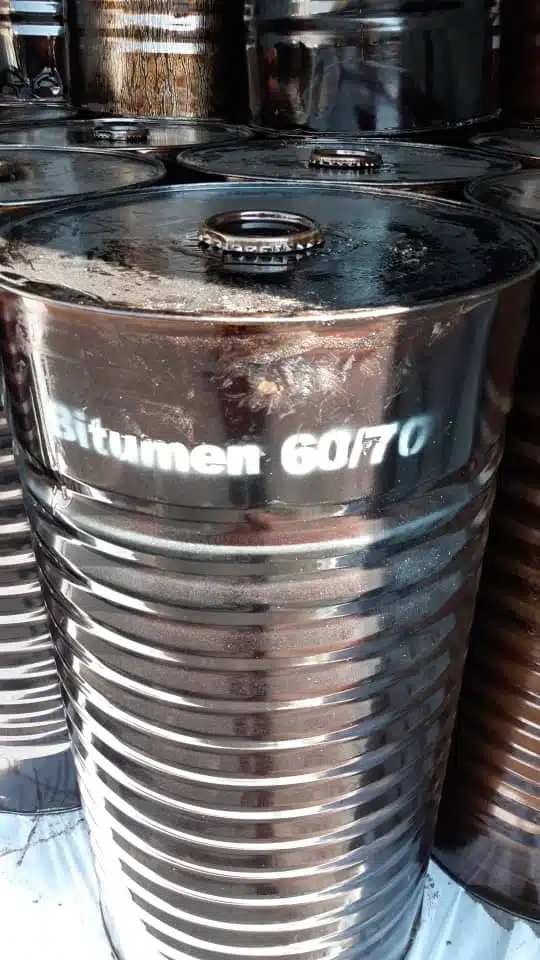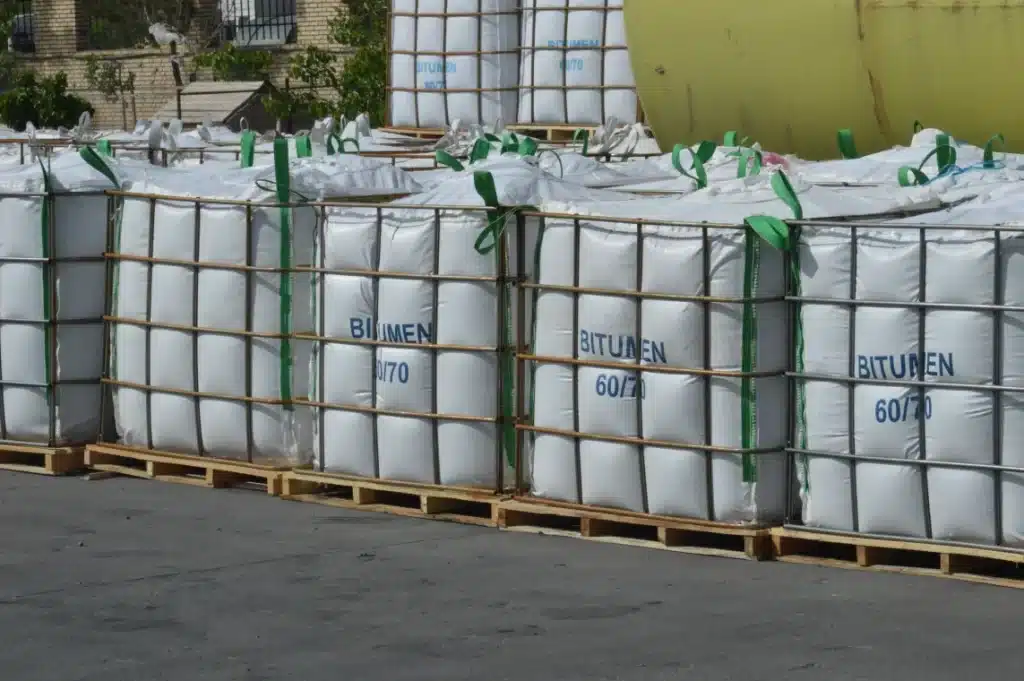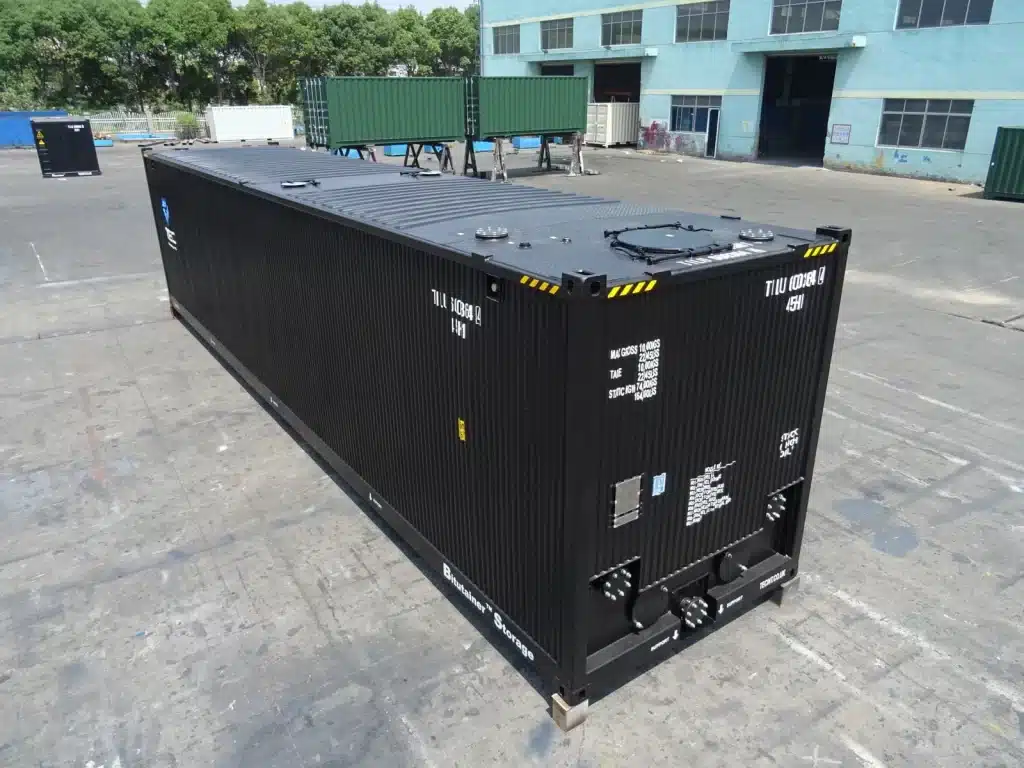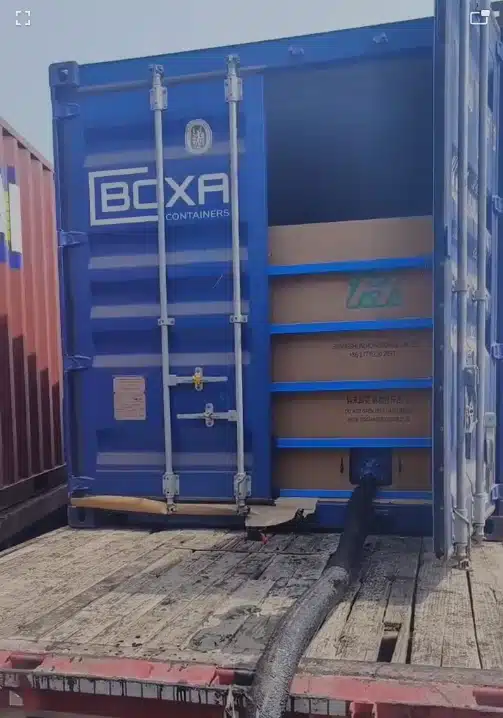Bitumen Packaging
Bitumen is a dark and viscous liquid that needs careful handling to ensure its safe storage, packaging, and transportation. Effective bitumen packaging maintains the quality of bitumen and provides safe delivery of bitumen to the destination. There are several methods for bitumen packaging. Read this article to learn these methods.
The table below provides an overview of the pros and cons of each bitumen packaging method.
Bitumen Packaging methods: Pros and Cons Overview | |||
Packaging method | Pros | Cons | |
 | Bitumen Drums |
|
|
 | Jumbo Bags |
|
|
Bulk Bitumen |
|
| |
 | Bitutainers |
|
|
 | Flexitanks |
|
|
 | Carton Packaging |
|
|
Types of Bitumen Packaging
There are different types of bitumen packaging. The common methods are:
Bitumen drums
Jumbo bags
Bulk bitumen
In addition, some less commonly used methods are:
Bitutainers
Flexitanks
Polymer bags
Carton Packaging
1.1 Bitumen Drum
Drum packaging is a common method of bitumen packaging. Bitumen drums are usually made of steel, and their capacity is 150 to 180 kg bitumen.
The thickness of the steel sheet used to make the steel drum is about 0.6 mm.
Since steel is expensive, bitumen steel drums are an expensive bitumen packing method. Additionally, a small percentage of bitumen may remain in the drum after use.
However, packing bitumen with steel drums is a safe method and the drums are not damaged easily during transportation.
1.2 Jumbo Bag
Jumbo bag is an alternative option for drum in bitumen packaging. It is also called bitu-bag.
Jumbo bags have two layers: the outer layer is multi-layer and made of flexible material, and the inner liner is made of special-purpose film.
These bags are UV-protected, flexible, and low in weight.
Each bag can carry over 1000 kg of bitumen.
Jumbo bags can be transported by common vehicles like ships, rail, and trucks. This helps that bitumen reaches every location in the world easily.
Jumbo bags are generally cheaper than drums, which leads to lower storage costs.
1.3 Bulk Bitumen
Bulk bitumen packaging is a method of transporting bitumen without using individual packaging materials like bitumen bags or bitumen drums.
In this method, the bitumen is heated and pumped into bulk bitumen tankers. The bitumen tankers are designed to keep bitumen at a specific temperature during transport. This ensures that bitumen stays in liquid form.
The bitumen tankers can be:
Road tanker (for land transportation)
Rail tanker (for transport by train)
Bulk vessels (for sea transport)
If the transportation occurs by sea, the bitumen is transferred from road or rail tanker to bulk vessels at the port. When vessels reach the destination port, the bitumen is transferred to a road tanker to deliver to the project location.
Bulk bitumen packaging has low packaging costs since it does not need individual packing material. However, its transportation cost is high since it needs special tankers, trucks, or vessels.
1.4 Bitutainers
Bitutainers are a kind of container that transports bulk bitumen. They have 30% more capacity than conventional tank containers.
Bitutainers have a heating system to heat the bitumen and keep it in liquid form during transport.
It is a good choice for transporting bitumen, bitumen emulsions, polymer-modified bitumen, waste oils and heavy fuel oils.
1.5 Flexitanks
Flexitanks are large and flexible bags which are used to transport bitumen. They are multilayer: 4 inner layers made of polyethylene and one outer layer made of polypropylene.
The flexitanks are installed inside 20-foot containers, and flexitanks’ capacity is 14000 to 24000 liters of bitumen.
This packaging method of bitumen can carry about 40% more bitumen than steel drums.
1.6 Polymer Bag
Polymer bags are similar to the jumbo bags. However, they are used for cold bitumen transportation.
Bitumen is heated and pumped into polymer bags. The bitumen temperature must be higher than the bitumen softening point and lower than the polybag’s melting point. Then, they let the bitumen cool down and become solid. Solid bitumen transportation is easier.
Polymer bags offer some environmental advantages. However, the packed bitumen and polymer bag must be melted at the destination to have liquid bitumen. So, a special pool for melting is necessary.
1.7 Carton Packaging
Another way to pack solid bitumen is using a bitumen carton.
In this method, the heated bitumen is poured into boxes, and the bitumen cools down and becomes solid.
Each bitumen carton can carry 20-40 kg bitumen
Comparison of Bitumen Packaging Methods
2.1 Cost Comparison
Bulk bitumen has the cheapest bitumen packaging cost among the common bitumen packaging methods. However, the transportation cost of bulk bitumen is higher than that of jumbo bags and bitumen drums since bulk bitumen needs special equipment.
Jumbo bags are cheaper than bitumen steel drums because drums are steel, and steel is expensive.
Bitutainers and flexitanks are expensive at first because of the need for special equipment. However, over time, these methods reduce the cost.
Carton packaging also is a cheap method; however, it is not durable.
2.2 Bitumen Wastage Comparison
Another difference between bitumen packing methods is the amount of bitumen wastage.
The waste of bitumen in drums is about 3-5%.
In contrast, in jumbo bags and polymer bags, bitumen wastage is near zero.
In bulk bitumen, it is likely that bitumen remains in transfer vessels, terminal tanks and road tankers.
2.3 Capacity Comparison
Bitumen tankers can carry large amount of bitumen. Bitutainers offer 30% more capacity than tank containers.
Also, flexitanks provide about 14000 to 24000 litres of bitumen.
Steel drums, jumbo bags, and carton packaging capacity are smaller than others. While a jumbo bag can carry about 1000 kg per bag, steel drums carry 150-180 kg of bitumen. For carton packaging, the capacity is 20-40 kg of bitumen.
2.4 Environmental Comparison
In bulk bitumen, energy is needed to keep the bitumen temperature during transportation. So, energy consumption is high, and there is a large carbon footprint.
About 3-5% of bitumen will remain in steel drums. Therefore, the remaining bitumen can pollute the environment.
Jumbo bags and polymer bags are eco-friendly because they are recyclable and decrease packaging waste.
Carton packaging is not environmentally friendly because cartons are not durable.
